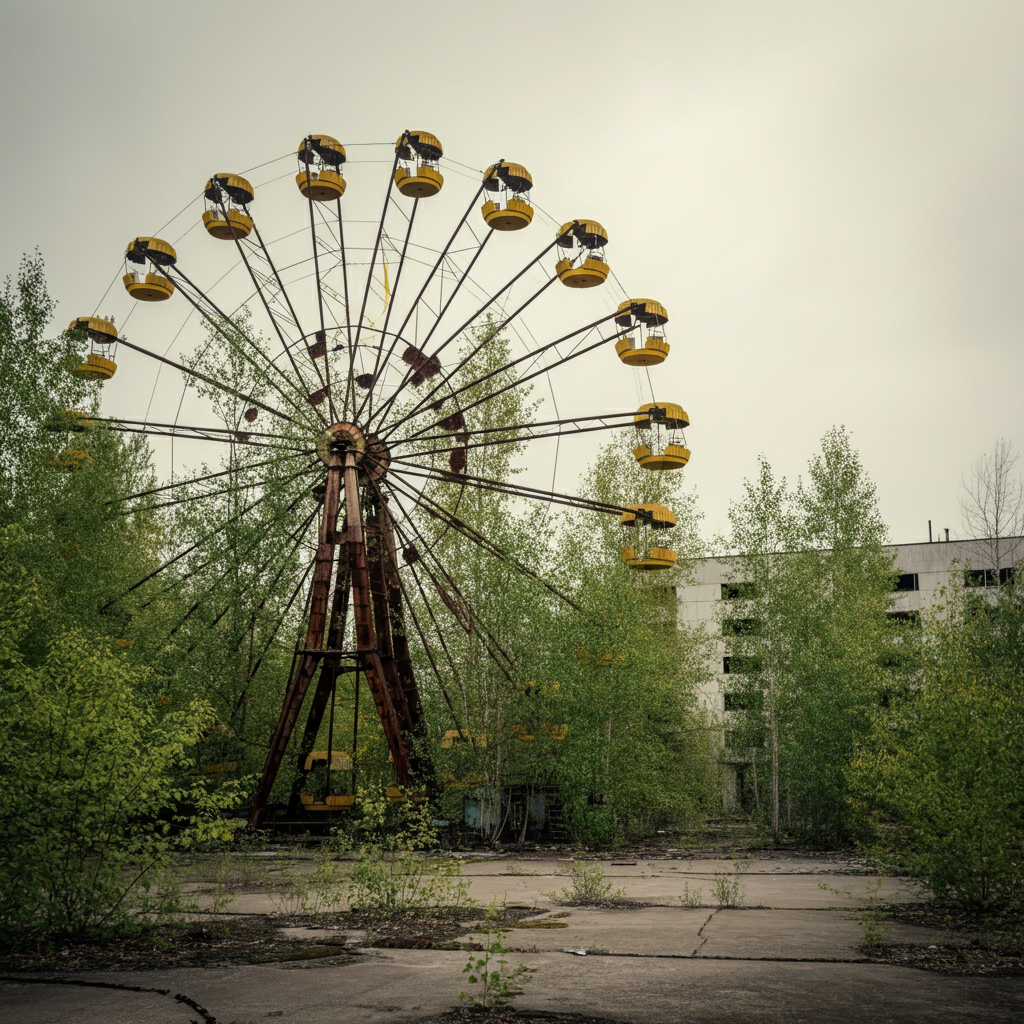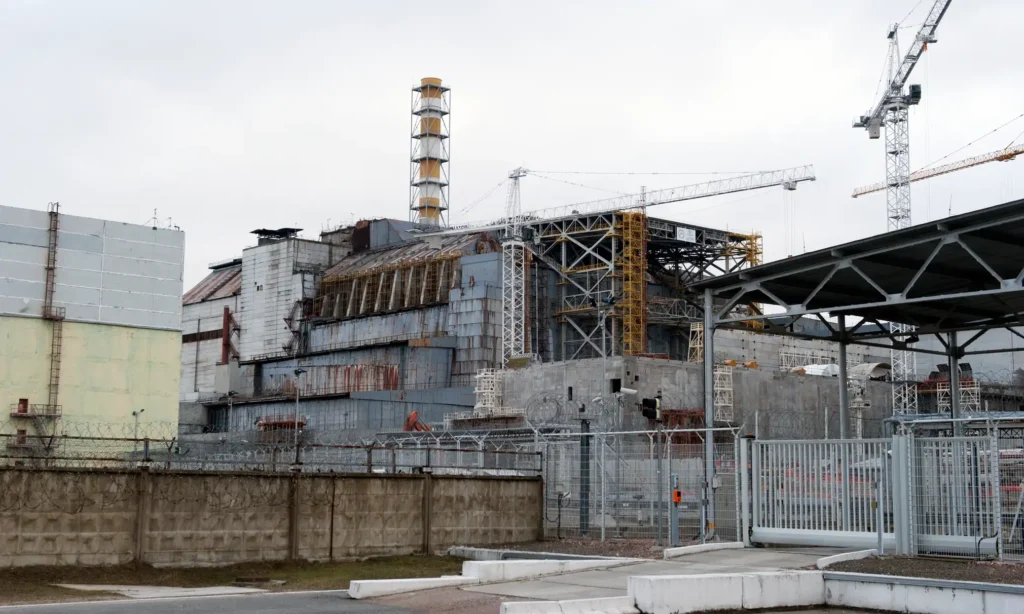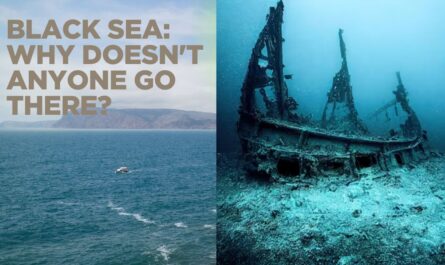Pripyat: Now A Ghost Town in Ukraine Next to Chernobyl
Once a city in Ukraine, Pripyat is now a town frozen in time, and a great representation of the impact of one of the worst nuclear disasters in history. The town is now a ghost town indexed as one of the contributors to the Chernobyl disaster. Pripyat was a active community which was abandoned after the explosion of the Chernobyl Nuclear Power Plant in 1986 April. The Chernobyl disaster resulted in approximately 30 immediate deaths from the blast and acute radiation syndrome, with an additional 4,000 deaths attributed to long-term health effects, mostly cancer.
In this blog you will find information regarding the areas of Pripyat, it’s infrastructure, geographical conditions, the amount of radiation exposure and what the town looks like now. Also you will find information regarding the chances of Pripyat being reinhabited again in the future.

History
The Beginning Years
The Ukrainian city Pripyat was built in 1970 and was close to the Chernobyl Nuclear Power Plant. It was built to serve as a town for the workers of the plant, along with their families, meaning that the city was personally designed for the workers of the plant. The city was built after the name of the river Pripyat and this is a representation of the Soviet Union’s industrial abilities and progress.
Pripyat was converted into a city in 1979 and since then has served as a modern and beautiful place to live. It is categorised as one of the oldest cities in Ukraine. The city is known for its advanced infrastructure which includes, but is not limited to, primary and secondary schools, hospitals, as well as cultural and entertainment centers. Surpassing 49,000 population in the mid-1980s.
Pripyat is an exceptional city with an amazing soviet construction plan. Each residential area had its own parks, theaters, and sports fields, which enhanced the quality of life. Excitement is an understating the situation when residents describe how they lived in a model Soviet city.
Post-Chernobyl Disaster
Things swiftly changed on the 26th of April in the year of 1986. Every living soul in Pripyat would have their life forever changed when block number 4 of the nuclear power plant at Chernobyl blew up and discharged an unimaginable quantity of radioactive substances in the surrounding area. Although the disaster took place at night, notification was not even close to the residents. People went about their work the next day without realizing they were under threat of radiation.
Attack warning sirens would start being used about 36 hours after the initial explosion, and only on the 27th of April did officials begin with the abandon of Pripyat. Soldiers instructed citizens to prepare a tiny backpack with supposing clothes for the days to come. The residents had no hope of coming back to Pripyat ever again. The major portion of the population had been completely removed with no notice to the significant change in lifestyle.
Infrastructure and Statistics
In the beginning, prior to the disaster, Pripyat was a city that had all modern facilities. Here is a list of its facilities and amenities:
- 13,414 available apartments
- 25 daycare centers and schools
- 1 medical facility having 410 beds
- Approx. 35 playgrounds
- Cultural facilities such as a movie theater, library, and a music school
- Sports facilities, swimming pools, a gym, and a few soccer fields
Pripyat once had a central square filled with shops, cafés, and a hotel – all of which connected to the nearby nuclear power plant, the city’s economic centerpiece, It provided the main driving force of the city’s economy. After these places were abandoned and left empty, Pripyat became representative of how life changed dramatically after the disaster.
Pripyat Was A Modern City Before Disaster. life was very peaceful before the Chornobyl disaster. It was rated as the most modern city because it had standard of living, entertainment, education, and sports. On top of that, the art and culture of Pripyat was very active which matched it with the other Soviet cities. Residents contributed to music, art, and they often held community picnics in the parks. Many citizens, especially the young households felt that they were in the spike of modernization. Nuclear energy gave hope for a brighter future.
How Much Was Pripyat Exposed to Radiation?
The radioactive event blew out a major part of the block in power plant number four, throwing iodine, cesium and strontium particles in the air. The city of Pripyat was largely affected because it was closest to the station, lying just 3 kilometers away.
For the initial period of the explosion, the citizens of Pripyat faced incredibly high levels of radiation. Regardless of the estimates, these lethal levels tended to harm and disrupt the normal functioning of the body. Enough to say, these levels were enough to deal life threatening illnesses and the worst case, death.
Most citizens showed varying signs of skin burns, dizziness, kidney failure or nausea prior to evacuation. Even though everything went as planned but it might have caused more damage than good. Either way, it later came in handy for researching cancer. The short term aid is now worrying, and as a result, there has been an increase in cancer and other health issues for decades.

What is Life Like in The City Today?
Now the city lies in complete silence, as if a ghost has cursed it forever. Trees have grown over the remains of buildings, and nature seems to be taking control.
Tourists can visit Pripyat as part of a guided tour of the Chernobyl Exclusion Zone. The now world-famous Ferris wheel, located in the decayed amusement park, has become one of the most photographed places, symbolizing the impact of the disaster. It is noticeable that many personal items, such as toys, books, and even clothes, have not yet been picked up from the floor and shelves, which indicates that people ran in panic.
It is surprising that the wildlife that had long disappeared due to radiation is now thriving in Pripyat. Wolves, lynx, foxes and even eagles are also found in the area, taking advantage of the absence of humans. The lack of human activity is beneficial to the wildlife there, but Pripyat is still too radioactive for humans, which is why no one lives there permanently.
Will Pripyat Ever Be Reinhabited?
Even as cleanup and containment efforts continue, Pripyat will probably remain uninhabitable for the future. Long-lived radioactive elements, such as cesium-137, will take decades to reach safe levels.
Experts estimate that it will take hundreds, if not thousands, of years for Pripyat to become safe for permanent human settlements. The process of monitoring radiation levels is ongoing, and the Chernobyl Exclusion Zone will probably remain one of the most closely monitored areas on Earth.
In the meantime, Pripyat stands as a powerful reminder of the consequences of nuclear accidents. It serves as both a historic site and a warning story.
The Future of Pripyat as a Historical Landmark and Ghost Town
Pripyat is no longer part of Ukraine; it has become a symbol of human error and its corrections. From a model Soviet city to its transformation into ruins and haunting objects, there is plenty of history for history buffs, scientists and adventurous tourists to dive into.
In Pripyat, studying the Chernobyl disaster and its effects proves yet again that there is a great need for the best safety, responsibility and planning when it comes to nuclear energy. From being the subject of documentary films to reading about it, Pripyat is one of those places that is a stark reminder of humanity’s ambition and the disaster it can cause.
If this blog has captured your curiosity about Pripyat and the Chernobyl disaster, make sure to share this or leave a comment down below stating which part of the story interests you the most.
Also Read: Scientists discover the world’s largest coral near Solomon Islands
For More Updates Please Join :FaceBook




One thought on “Pripyat And Chernobyl Disaster: History, Radiation And Aftermath”